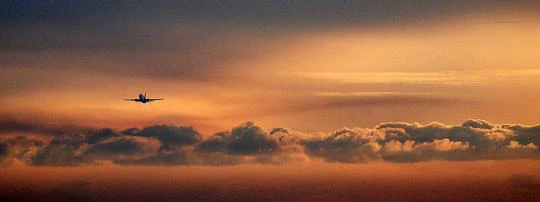
Air transport is an increasingly critical area for trade and trade facilitation. As such, our World Bank trade teams are always searching for global good practice and promising policy results.
This search recently brought us to Armenia, where an “Open Skies” policy has been in place since late 2013. For a country with a long legacy of tight regulations in its commercial aviation market, this new policy signaled a sharp break from tradition.
Although there are no single accepted definitions of Open Skies, it refers to a set of provisions typically agreed on a bilateral basis, that enable each party to set freely the number of flights, carriers, types of aircraft and destinations; but also pricing freedom, as well as establishing the conditions for fair competition and provisions for carriers to engage in commercial cooperation.
Armenia’ Open Skies policy is particularity important when considering the country’s historically limited connectivity with international markets – partly determined by geography, and partly determined by geopolitical considerations. Besides being landlocked, the country has open land borders with only two of its four neighboring countries.
Restrictive aviation policies contribute to frictions in the free movement of travelers, workers, and knowledge. Such frictions ultimately curtail the growth of the Armenian hospitality sector, which accounts for about 20 percent of all goods and services exports. Easing these frictions was intended to provide new economic growth opportunities, especially considering that the size of Armenia’s diaspora is several times larger than the number of inhabitants currently residing in the country.
For over 20 years – since the country became independent – attempts at setting up a national airline have proven unsustainable. As part of the Soviet Union, aviation in the Armenian Republic was dominated by the local Directorate of the Soviet national airline, Aeroflot. Even after the dissolution of the Soviet Union, this Directorate was spun off, and continued to operate under the name of Armenian Airlines – wholly owned by the Armenian state – until the year 2002, when it ceased operations due to insolvency issues.
Armavia Airline Company started operations in 2001. However, the carrier entered in a strategic partnership with S7 Airlines – owned by Russian nationals – under an investment agreement signed with the Armenian government in 2003. The agreement granted Armavia exclusivity rights on designated international routes for a period of 10 years and “first refusal” rights on any new routes negotiated by the Armenian government. Armenia also allowed private sector participation in airports as early as in 2001, bringing much needed investments in infrastructure that still relied on old soviet facilities.
For the duration of Armavia’s investment agreement contract, Armenia maintained a de facto single designation policy – whereas only one airline per country was allowed to operate on each route. The only exception was the Russian Federation, where up to three carriers per country were allowed in some markets like Moscow.
As a matter of policy stance, Armenian authorities restricted traffic rights to match Armavia’s operational capabilities, as a way of ensuring a “balanced” share of traffic for the Armenian carrier. Moreover, since the contract granted “veto” powers to Armavia, in some cases foreign airlines wishing to increase their services to and from Armenia were forced to first enter into commercial agreements with the airline – a practice that is widely recognized as anti-competitive.
As a consequence of these and other restrictive aviation policies, the number of flights that foreign airlines could offer was significantly constrained and competition between carriers was limited. Different studies carried out from 2010-2012 estimated that, as a result of these policies, inbound and outbound fares per kilometer into and out of Armenia (exclusive of taxes, fees, and charges) evidenced a premium of 33 to 50 percent, as compared to neighboring Georgia – a country with a fully liberalized aviation regime. For instance, after Georgia adopted its Open Skies policy in 2005, passenger traffic growth rates doubled those of Armenia over the next six years.
Following a prolonged period of financial and operational distress, Armavia ceased operations in March 2013. The demise of the Armenian carrier brought an agitated debate over aviation in Armenian policy fora.
Armavia’s disappearance seemingly acted as a catalyst for the Government of Armenia to consider the liberalization of its commercial aviation market. In effect, through a series of government decrees, Armenia adopted its own Open Skies policy in late 2013.
Following this policy, new or modified air service agreements would allow any airline wishing to serve the Armenian market, to do so without any restriction in the number of flights or aircraft size (not including 5thfreedoms – the right of Country A to pick up passengers in Country B, and carry them to Country C), provided it complies with safety regulations.
The Russian Federation and United Arab Emirates were the first to amend their old air service agreements with the government to reflect the new policy. Following this, seat capacity to Dubai increased by 50 percent since late 2012, and two entrant carriers are providing new services to Abu Dhabi and Sharjah. As a result, seat capacity has increased by 20 percent, even when factoring in the loss of available seats due to Armavia’s bankruptcy.
After a full year of Open Skies, airport passenger traffic in Yerevan, the capital, expanded by approximately 20 percent compared to 2013. The number of flights and choice of carriers serving Yerevan also increased.
Different sources indicate that fares have dropped up to 25 percent on certain routes, further stimulating demand growth. The possible arrival of low-cost carriers to Armenia can bring a wider range of services in addition to the offering of legacy airlines, likely to further simulate demand within the more price-sensitive segment of the market.


Join the Conversation